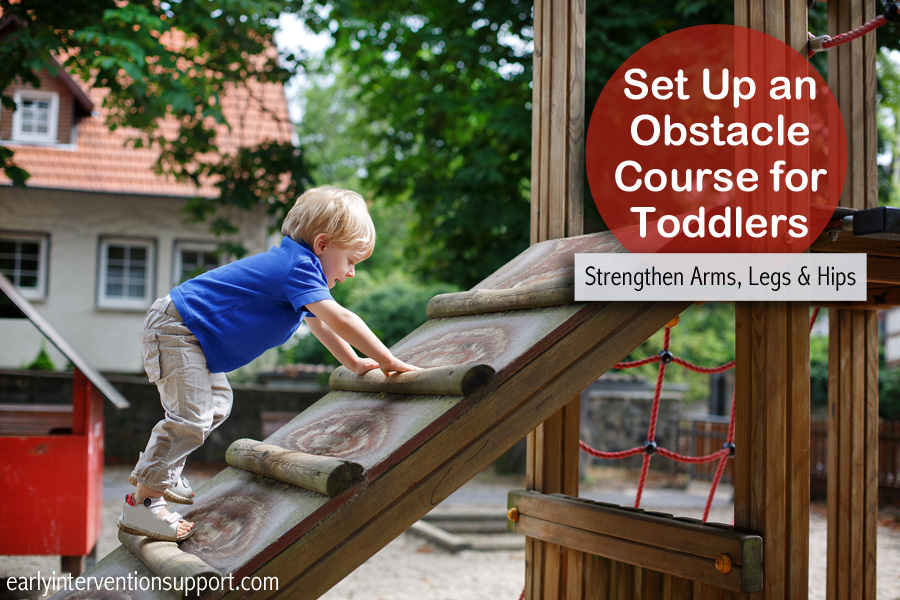Depending on your toddler’s physical development and needs, there are a variety of obstacles you can introduce to develop his/her gross motor skills. Obstacle courses are a great tool in pediatric physical therapy and used by many therapists in the field. Therapists and parents often know what muscle groups need strengthening, but asking a toddler to perform a regimen of repeated exercises is not a realistic option. So we, as therapists, develop fun and interactive ways to target these gross motor skills.
Obstacle courses can be very versatile; just let your creativity and child’s interests drive you. They can be set up indoors or outdoors and include many household items such as step stools, pillows, laundry baskets, balls, chairs, tape, or pool noodles. It is also highly recommended to get the whole family involved. Allow siblings to join in, make dad or mom do the course first and have fun with it. If the child feels they are singled out and they are required to do it, resistance will become a problem. Also depending on your toddler’s attention span, courses can be made up of 2-6 sections.
The most important part of an obstacle course is to make sure the child is amused by it and they are rewarded for their behavior.
Toddler Obstacle Course Options
Upper extremity (arms and shoulder girdle) strengthening course:
- “Pittsburgh chairs:” Line up kitchen chairs to make your very own Fort Pitt tunnel to crawl through.
- “Mission hallway impossible:” Tape from wall to wall approximately 2-3 feet off the ground, and the child is not allowed to touch the tape or they get buzzed. Using sound effects make this game very entertaining!
- “Pile of noodles:” (Wait! Don’t throw dinner on the floor, yet!) Pool noodles. Have your toddler crawl through the noodles to really work their wrists, elbows, shoulders, and upper back.
- “Climb the Mountain:” using a step stool, encourage crawling over the mountain. If the step stool is too easy, a soft ottoman could do the trick.
Other options for arm strengthening, if available:
- Fabric tunnel
- Playground climbing wall, with guarding
Lower extremity (legs and hips) strengthening course:
- “Up and over the mountain:” Use a step stool to encourage stepping up and down. Also encourage non-preferred leg use (if your child shows a preference).
- “Pillow Bridge:” Make a row of pillows to walk across. Don’t fall off the bridge! Walking on pillows is a great way to strengthen ankle muscles.
- “Basket boat:” After crossing the “bridge,” climb into your “boat.” This is a fun way to work on balance and coordination.
- “X marks the spot:” With colored tape, have your toddler step on as many X’s as he can before crossing the finish line. Place X’s sporadically to encourage side stepping and backward steps.
Other options for leg strengthening, if you have available:
- Playground ladders
- Stairs, with guarding
- Small trampoline, with guarding.
Final Obstacle Course Tips
- Never make this work for your toddler, play is already their “job.”
- Keep close during all activities in case of falls. Falls are necessary for proper development, but safety is first.
- Stick with it. If they don’t take to it the first time, it’s okay to stop and try again later. But stick with the theme and set up, so they can get the hang of it before changing it or making it more challenging.
- Hallways are a great place for first time set ups.
- Involve everyone so they feel it is a group activity, not just their therapy time.
- REWARD, REWARD, REWARD. Use whatever encourages your little one to succeed whether it be praise, bubbles, stickers, or coins for their piggy bank (good idea for the treasure hunt obstacle course).
By Shanna Ross

